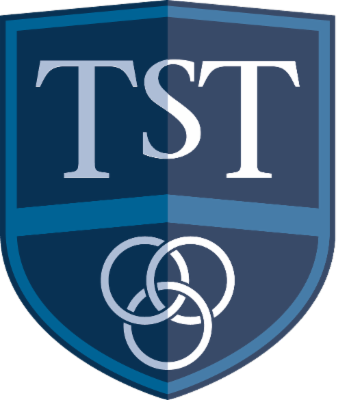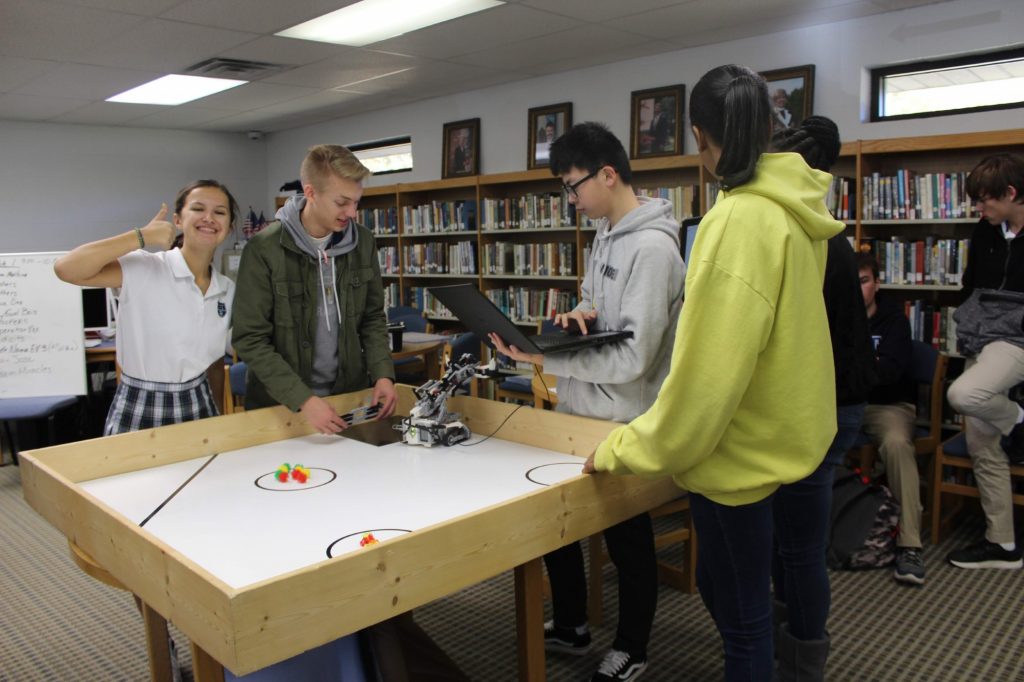Several years ago a couple of middle school boys approached me about starting a robotics club at TST. Although I knew absolutely nothing about robotics at the time, I agreed. Later that year we competed in our first event at Region VII in Kilgore. The competition had two components. The first required students to build and program a robot to complete different tasks such as following a color line, going up a ramp, or moving objects from one place to another. Students were allowed to build and program their robots beforehand and could make adjustments between rounds. The second part was where our team shone – the engineering challenge. The team captains all met in a little room (there were over 80 teams, so maybe not so little), and there they were presented with the guidelines and competition board. Teams were given two short hours to build and program their robots. Coaches were not allowed to help in any way. That year, their very first time to compete, the TST middle school team walked away with a first place trophy. I can still remember their voices belting out Queen’s “We Are the Champions” all the way back to Longview.
Fast forward a few years. Trinity now boasts robotics teams at the lower school (4th and 5th grade), middle school (6th – 8th grade), and upper school (9th – 12th grade) levels. For the last two years we have hosted our own tournament and competed in others. Next week our lower and middle school teams will compete in the Komatsu Invitational and then the Region VII Spring Tournament. Trinity also boasts a drone and an engineering club. Our upper school engineering team competed in an IEEE sponsored event at LeTourneau University a few weeks ago and returned home with a second place win. Not bad for their first time!
Over the years, I have watched more and more students get excited about math, science, and coding because of robotics. They calculate fractions, measure angles, and divide decimals. They learn about color and motion sensors, friction, momentum, and a host of other concepts. But more importantly, they build social emotional skills such as persistence, critical thinking, teamwork, and collaboration. Each time they program and test their robots, they see ways to improve. Maybe the angle needs to change or the robotic arm needs to be adjusted, whatever it is they learn to keep trying. Failure is no longer seen as failing, but as a chance to improve their design or code. Their problem-solving and critical thinking skills get better with each and every setback. In addition they learn to collaborate with others. At our last competition, it was heartwarming to see competing teams give each other helpful feedback and design advice. That seems to happen all the time.
Last year our youngest students began their robotics journey. Last year’s STEAM Fund-a-Cause allowed us to purchase robotics kits for additional grade levels. Along with Lego EV3 kits, we now have DASH robots, Lego WeDo kits, Edisons, and many others. Even our PreK students get to join the fun using the Code-a-Pillar and Coding Express trains.
If you have ever walked down Davis-Lewis Hall during a STEAM class, chances are you have had to step over a student with a ruler or protractor trying to figure out how to get his or her robot to follow a course. You won’t hear any griping about having to do math though; they are too busy learning not just the math principles themselves, but more importantly, why they need to learn them.
Mellissa McCreary
Director of Curriculum
STEAM Lab Teacher

 Login
Login







